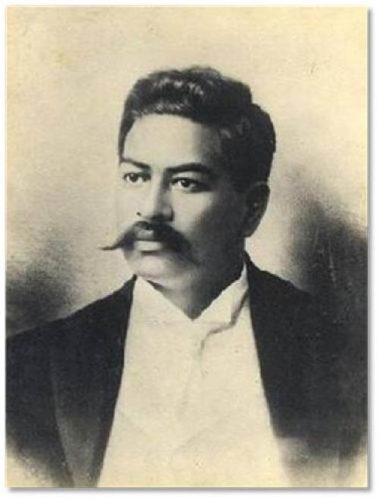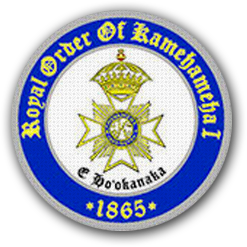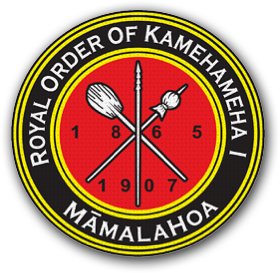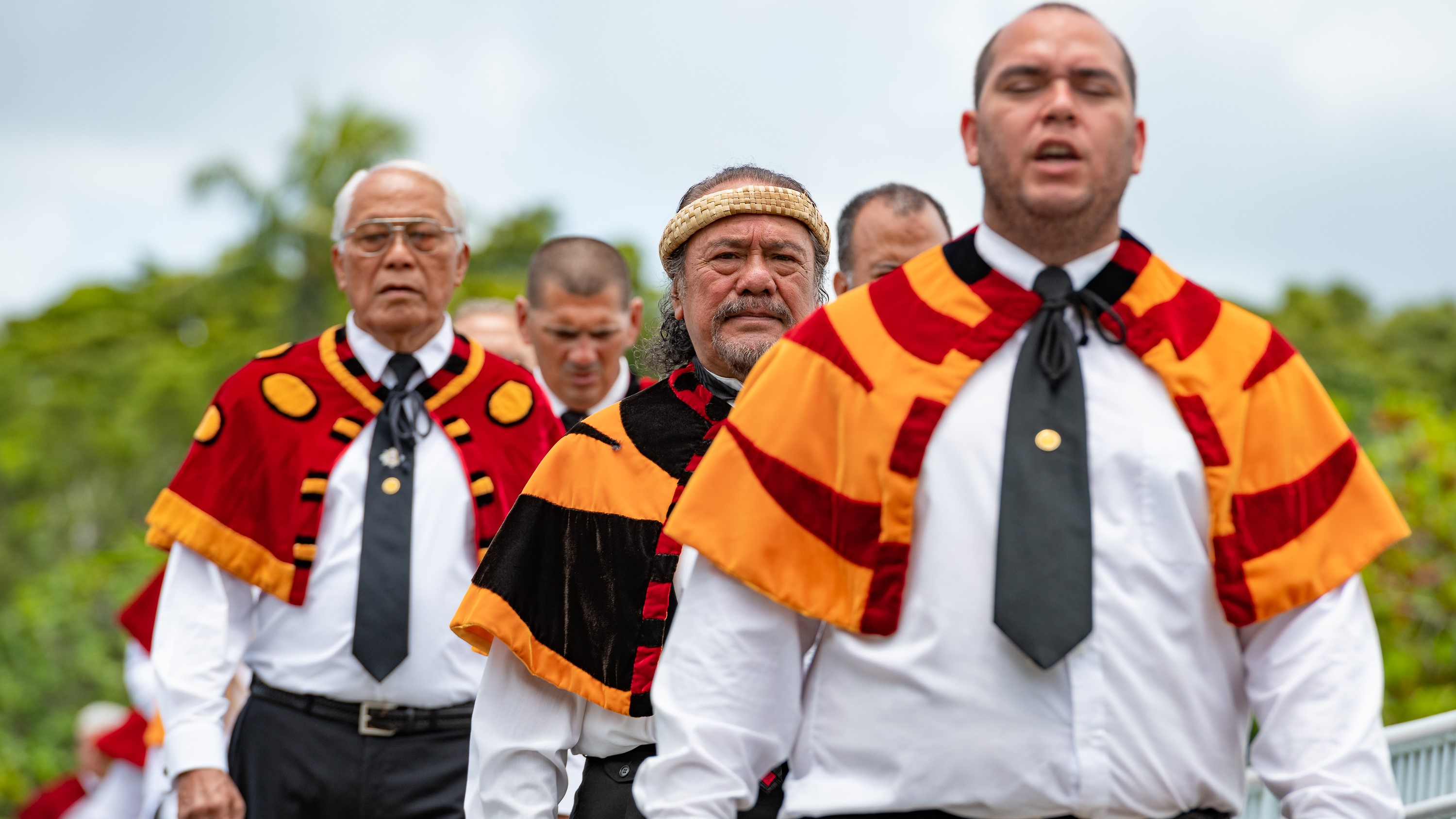Reorganized the Royal Order of Kamehameha I
Born Jonah Kūhiō Kalaniana‘ole Pi‘ikoi on March 26, 1871, Prince Kūhiō was the youngest child of High Chief David Kahalepouli Pi‘ikoi and Victoria Kūhiō Kinoike Kekaulike (sister of Queen Kapi‘olani). Prince Kūhiō was named after his maternal grandfather Kūhiō Kalaniana‘ole a High Chief of Hilo, and his paternal grandfather Jonah Pi‘ikoi, a High Chief of Kaua‘i. On the death of his parents (father in 1880 and mother in 1884) he was adopted (hānai) by his maternal aunt, Queen Kapio‘lani and husband King David Kalakaua.
 When David Kalakaua ascended the throne of the Hawaiian Kingdom in 1884 a proclamation that ended the Kamehameha Dynasty also declared Jonah Kūhiō Kalaniana‘ole a royal prince. King David Kalakaua appointed Prince Kūhiō to a seat in the royal Cabinet administering the Department of the Interior. A year after the overthrow of Queen Lili‘uokalani (King Kalakaua’s sister) and the Kingdom of Hawai‘i in 1893, Prince Kūhiō participated in a Kanaka ‘Ōiwi (aboriginal peoples of Hawai‘i) military attempt to restore the monarchy. However, the attempt was unsuccessful and Prince Kūhiō was sentenced to prison. After getting out of prison Prince Kūhiō left Hawai‘i, but returned after it was annexed as a territory of the United States in 1898.
When David Kalakaua ascended the throne of the Hawaiian Kingdom in 1884 a proclamation that ended the Kamehameha Dynasty also declared Jonah Kūhiō Kalaniana‘ole a royal prince. King David Kalakaua appointed Prince Kūhiō to a seat in the royal Cabinet administering the Department of the Interior. A year after the overthrow of Queen Lili‘uokalani (King Kalakaua’s sister) and the Kingdom of Hawai‘i in 1893, Prince Kūhiō participated in a Kanaka ‘Ōiwi (aboriginal peoples of Hawai‘i) military attempt to restore the monarchy. However, the attempt was unsuccessful and Prince Kūhiō was sentenced to prison. After getting out of prison Prince Kūhiō left Hawai‘i, but returned after it was annexed as a territory of the United States in 1898.
As the last surviving designated heir to the throne, had it not been for the illegal overthrow, Prince Kūhiō would have succeeded Queen Lili‘uokalani (1838-1917) as King of Hawai‘i and Grand Master of the Royal Order of Kamehameha I. Never the less, Prince Kūhiō found opportunities to serve the people as the Territory of Hawai‘i’s elected congressional delegate (Washington D.C.) for 10 consecutive terms. Prince Kūhiō was often called Ke Ali‘i Makaainana (Prince of People) and is well known for his efforts to protect, preserve, and perpetuate, the Hawaiian culture and people. While a delegate of Congress Prince Kūhiō guided the passage of the Hawaiian Homes Commission Act (1921) that provides lands for native Hawaiians to homestead.
In 1907 Prince Kūhiō, along with other prominent Hawaiian men including: Dr. George H. Huddy, James H. Boyd, George L. Desha, Sr., Abraham Fernadez, Charles H. Rose, William H. Coney, John H. Wise, Rev. J. M. Ezera, David K. Aiona, and John K. Nako‘oko‘o, reorganized and restored to public light, the Royal Order of Kamehameha I (Order). In 1917 Prince Kūhiō, along with four other prominent Hawaiian men and Brothers of the Order (John C. Lane, John H. Wise, Noah Aluli, and Jesse Ulihi), established the Hawaiian Civic Clubs. Prince Kūhiō served in congress from 1903 till his death on January 07, 1922 at the age of fifty. His body was interred at the Royal Royal Mausoleum known as Mauna ‘Ala in Nu‘uanu on the island of O‘ahu.


